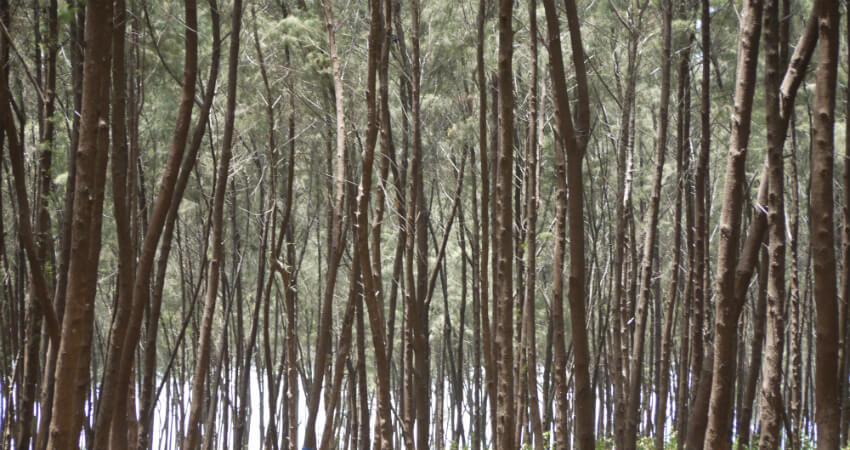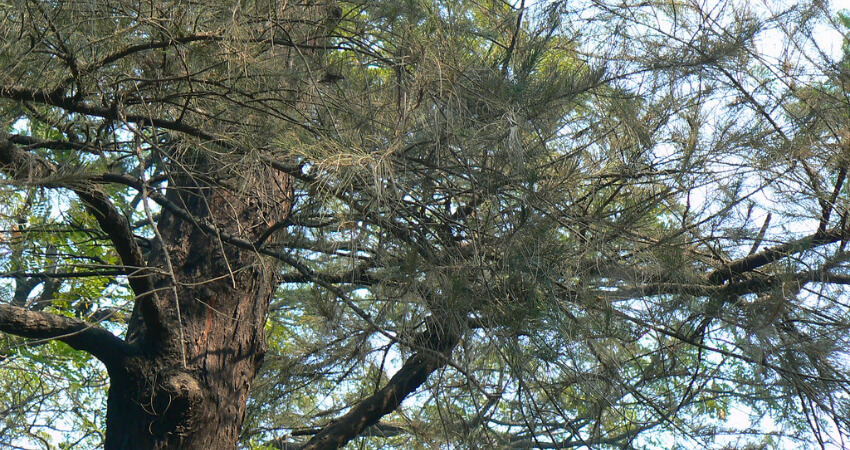Casuarinas are a versatile group of plants with wide-ranging adaptability to grow in different environments and provide multiple end uses and services. They fix atmospheric nitrogen through a symbiotic association with the bacteria, Frankia.
Casuarina seeds are small consisting 5 to 6 lakh seeds per kg. But about half of them may actually be immature seeds which usually do not germinate. Germination is generally around 30% and about 30,000 to 100,000 seedlings are obtained from a kg of seed depending upon source of seed and nursery efficiency. Seeds are sown in raised sand beds (called ‘mother beds’) of the size 10 x 1 m. Generally no pretreatment is necessary for casuarina seeds. In each bed about 250 g of seeds (50 g for Casuarina junghuhniana) are evenly spread by mixing with fine sand. They are overlaid with a thin layer of sand. The sand bed is covered with rice straw to prevent washing off of seedlings while watering. Water is provided through a rose can or a sprayer. A suitable repellent is applied along the periphery of the bed to prevent ants removing the seeds.
Since casuarina is planted as bare-root seedlings, planting them just before or during the rains ensures high survival especially under rainfed conditions. Where irrigation is available, it is recommended to plant one month before the rain and provide water once or twice a week. This will help the plants to establish well before the arrival of monsoon and grow faster than those planted during the rain.
Land must be preferably disc ploughed twice. Pit size for planting container-raised plants (poly bag or root trainer) is 30 cm x 30 cm x 30 cm. The recommended spacing for realizing full potential of genetically improved planting stock is 1.5 x 1.5 m. Add a basal dose of 10 g of super phosphate per pit before field planting of seedlings. Application of anti-termite solution (e.g. chlorophyriphos 1ml per litre of water) may be needed in red soils or where the problem has been encountered before. This may not be necessary in sandy soils in coastal areas. If no rain received immediately after field planting of seedlings, watering in alternate days is necessary for the first two weeks. The frequency may be reduced gradually to once or twice a week depending upon local conditions. Casualty replacement should be taken up only up to one month after planting. Four weedings needs to be carried out at 3, 6, 9 and 12 months or till the canopy closes whichever is later. Two prunings need to be taken up at 12 and 24 months. Fertilizer application is not necessary after planting if the land is fairly fertile. In low-nutrient soils DAP 100 kg per acre may be applied between 12 and 24 months.


![]()